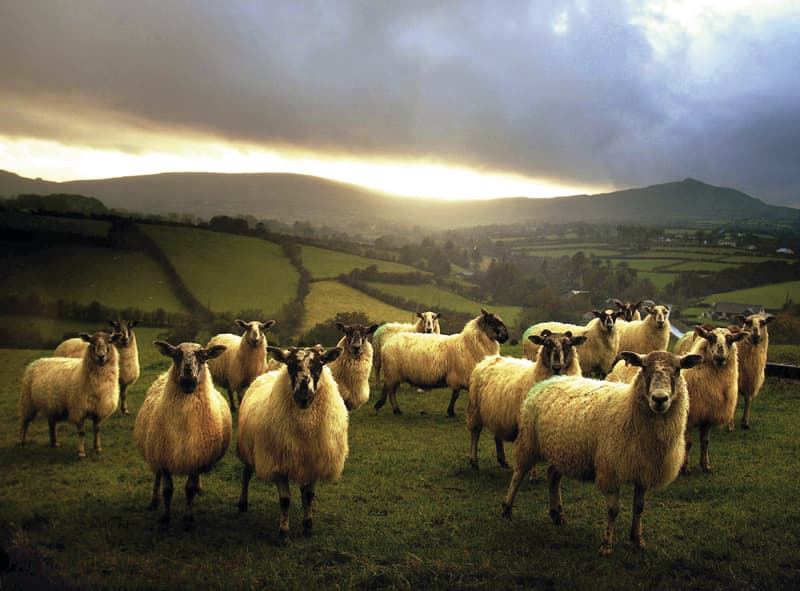Photo Insight with Cathal McNaughton

Award-winning Cathal McNaughton has more than ten years’ experience covering conflicts and breaking news for national newspapers and international press agencies. He shares his best press photographs and reveals how he captures a subject in ways that others haven’t seen
I took this image about ten years ago in a place called Ballybrack, just south of county Dublin in Ireland. On this particular evening there was a beautiful sunset, so I was out with my camera, driving around to see if I could find a good subject to make the most of this gorgeous light. I can spend hours driving around, looking at things, sometimes not photographing anything at all but just looking.
When I’m not on an assignment I’ll be out with my camera taking pictures wherever I am. If I look outside and see that there is nice light, or if the sky looks stormy, I’ll be out with my camera. For me, photography isn’t a job – it is part of who I am.
I grew up in the countryside, immersed in nature, and it’s something that is still very important to me. I actually take a lot of wildlife pictures, although most people wouldn’t know that. If I weren’t living in Belfast working for news agencies and covering riots, this is what I would be photographing. I get a lot of satisfaction from taking photographs like this. It makes a change from the hard news I cover on a regular basis.
I spotted these sheep in a nearby field. Sheep are easily spooked, so if I’d stopped the car and got out, closing the door behind me right in front of them, they would have disappeared in seconds. Consequently, I drove past the field and parked the car a couple of hundred metres up the road. I got out my camera at the time – a Kodak Professional DCS 520 – and chose a 17-35mm lens.
I made sure I closed the car door very quietly so as not to startle the sheep and worked out my exposure, which I think was around 1/250sec at f/8. I wanted to retain sharpness from the foreground to background so the viewer could see the details in the distance, and also for the sheep to be sharp. Shooting at these settings enabled me to achieve this as much as possible.

I walked slowly along the hedge so the sheep wouldn’t see me coming. When I reached the gap in the hedge where the sheep were grazing, I lifted the camera to my eye and composed the picture immediately. As soon as I did this, the sheep raised their heads and looked straight at me. I momentarily waited until I had eye contact with most of them before firing off a few frames. I had a few seconds when the sheep stood still, although the one in the middle is just starting to move. They looked at me for about ten seconds, giving me just enough time to get the picture before they moved and the moment was gone. There are a few frames either side of this one where a couple of the sheep are looking away or grazing. It was a case of shoot first, edit later.
I sell a lot of prints of this picture. I’ve nicknamed it the ‘Family Portrait’ because it looks like the sheep are posing for a photograph. In family portraits there is always someone who isn’t looking at the camera, and if you look at the middle of the picture you can see one sheep is not facing forward. He’s the renegade in the family – the ‘black’ sheep!
I took this image in the summer so the light was quite warm. It created a lovely golden glow. I was shooting into the sun, so this initially posed all sorts of challenges. It can be tricky to retain detail in the shadows and to avoid overexposing the sky when photographing in this way. Fortunately, the sun had almost disappeared behind the mountains so the light wasn’t as strong as it could have been. The sun almost creates a rim-lighting effect.
Light obviously plays a fundamental role in photography, and the sun is the most powerful emitter of light we have. It’s a case of understanding where the sun is at different times of the day in relation to your subject. Without the golden sunset, this picture would have been an ordinary picture of sheep standing in a field. The light makes the picture, but so do the sheep and the fact they are all (bar one) looking at me. If the image had been missing either of these elements it would have been boring. It’s not enough to have nice light – the subject has to be right, too. It is a matter of understanding the various elements that make up a picture – training your eye to notice subjects and looking at things at different times of the day and in all kinds of light.
Cathal McNaughton was talking to Gemma Padley
To see more of Cathal or to book a place on one of his workshops visit www.cathalmcnaughton.com







